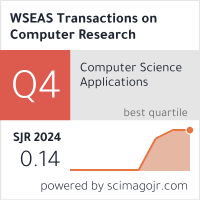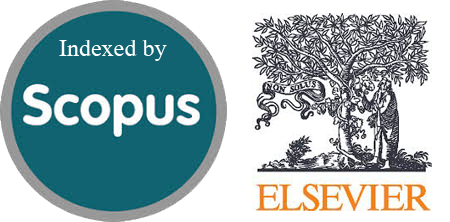Optimizing Post-Cancer Treatment Prognosis: A Study of Machine Learning and EnsembleTechniques
Keywords:
Cancer treatment, Classification, Ensemble techniques, Prediction, Performance Measure Indices, Hyperparameter TuningAbstract
The aim is to create a method for accurately estimating the duration of post- cancer treatment, particularly focused on chemotherapy, to optimize patient care and recovery. This initiative seeks to improve the effectiveness of cancer treat- ment, emphasizing the significance of each patient’s journey and well-being. Our focus is to provide patients with valuable insight into their treatment timeline because we deeply believe that every life matters. We combined medical expertise with smart technology to create a model that accurately predicted each patient’s treatment timeline. By using machine learning, we personalized predictions based on individual patient details which were collected from a regional government hospital named Sylhet M.A.G. Osmani Medical College & Hospital, Syl- het, Bangladesh, improving cancer care effectively. We tackled the challenge by employing around 13 machine learning algorithms and analyzing 15 distinct features, including Logistic Regression, Support Vector Machine, Decision Tree, Random Forest, etc we obtained a refined precision in predicting cancer patient’s treatment durations. Furthermore, we utilized ensemble techniques to reinforce the accuracy of our methods. Notably, our study revealed that our majority voting ensemble classifier displayed exceptional performance, achieving 77% accu- racy, with LightGBM and Random Forest closely following at approximately 76% accuracy. Our research unveiled the inherent complexities of cancer datasets, as
seen in the Decision Tree’s 59% accuracy. This emphasizes the need for improved algorithms to better predict outcomes and enhance patient care. Our comparison with other methods confirmed our promising accuracy rates, showing the poten- tial impact of our approach in improving cancer treatment strategies. This study marks a significant step forward in optimizing post-cancer treatment prognosis using machine learning and ensemble techniques
References
Zaorsky, N.G., Churilla, T., Egleston, B., Fisher, S., Ridge, J., Horwitz, E., Meyer, J.: Causes of death among cancer patients. Annals of oncology 28(2), 400–407 (2017)
Marx, J.L.: How cancer cells spread in the body: Metastatic cancer cells need to undergo several changes in order to make the arduous journey from the primary tumor where they originated to new target sites. Science 244(4901), 147–148 (1989)
Sung, H., Ferlay, J., Siegel, R.L., Laversanne, M., Soerjomataram, I., Jemal, A., Bray, F.: Global cancer statistics 2020: Globocan estimates of incidence and mor- tality worldwide for 36 cancers in 185 countries. CA: a cancer journal for clinicians 71(3), 209–249 (2021)
Bleyer, W.A.: What can be learned about childhood cancer from “cancer statistics review 1973–1988”. Cancer 71(S10), 3229–3236 (1993)
Ferlay, J., Colombet, M., Soerjomataram, I., Parkin, D.M., Pin˜eros, M., Znaor, A., Bray, F.: Cancer statistics for the year 2020: An overview. International journal of cancer 149(4), 778–789 (2021)
Cairns, J.: The cancer problem. Scientific American 233(5), 64–79 (1975)
Le Saux, O., Falandry, C.: Toxicity of cancer therapies in older patients. Current Oncology Reports 20, 1–11 (2018)
Patriotis, C., Srivastava, S.: Early cancer detection: Challenges and opportuni- ties. Circulating Tumor Cells: Advances in Liquid Biopsy Technologies, 619–631 (2023)
Kourou, K., Exarchos, T.P., Exarchos, K.P., Karamouzis, M.V., Fotiadis, D.I.: Machine learning applications in cancer prognosis and prediction. Computational and structural biotechnology journal 13, 8–17 (2015)
Chowdhury, M.J.U., Hussan, A., Hridoy, D.A.I., Sikder, A.S.: Incorporating an integrated software system for stroke prediction using machine learning algo- rithms and artificial neural network. In: 2023 IEEE 13th Annual Computing and Communication Workshop and Conference (CCWC), pp. 0222–0228 (2023). IEEE
Sharma, A., Yadav, D.P., Garg, H., Kumar, M., Sharma, B., Koundal, D., et al.: Bone cancer detection using feature extraction based machine learning model. Computational and Mathematical Methods in Medicine 2021 (2021)
Gupta, P., Chiang, S.-F., Sahoo, P.K., Mohapatra, S.K., You, J.-F., Onthoni,
D.D., Hung, H.-Y., Chiang, J.-M., Huang, Y., Tsai, W.-S.: Prediction of colon can- cer stages and survival period with machine learning approach. Cancers 11(12), 2007 (2019)
Montazeri, M., Montazeri, M., Montazeri, M., Beigzadeh, A.: Machine learning models in breast cancer survival prediction. Technology and Health Care 24(1), 31–42 (2016)
Alabi, R.O., Elmusrati, M., Sawazaki-Calone, I., Kowalski, L.P., Haglund, C., Coletta, R.D., M¨a kitie, A.A., Salo, T., Almangush, A., Leivo, I.: Comparison of supervised machine learning classification techniques in prediction of locore- gional recurrences in early oral tongue cancer. International journal of medical informatics 136, 104068 (2020)
Islam, M.M., Iqbal, H., Haque, M.R., Hasan, M.K.: Prediction of breast cancer using support vector machine and k-nearest neighbors. In: 2017 IEEE Region 10 Humanitarian Technology Conference (R10-HTC), pp. 226–229 (2017). IEEE
Diamant, A., Chatterjee, A., Valli`eres, M., Shenouda, G., Seuntjens, J.: Deep
learning in head & neck cancer outcome prediction. Scientific reports 9(1), 2764 (2019)
Chu, C.S., Lee, N.P., Adeoye, J., Thomson, P., Choi, S.-W.: Machine learning and treatment outcome prediction for oral cancer. Journal of Oral Pathology & Medicine 49(10), 977–985 (2020)
Zhu, W., Xie, L., Han, J., Guo, X.: The application of deep learning in cancer prognosis prediction. Cancers 12(3), 603 (2020)
Vahini, M., Deepthi, N., Sarika, N., Abhisri, P., et al.: Liver cancer detection using machine learning. Turkish Journal of Computer and Mathematics Education (TURCOMAT) 14(03), 1247–1251 (2023)
Asri, H., Mousannif, H., Al Moatassime, H., Noel, T.: Using machine learning algorithms for breast cancer risk prediction and diagnosis. Procedia Computer Science 83, 1064–1069 (2016)
Shrivastava, D., Sanyal, S., Maji, A.K., Kandar, D.: Bone cancer detection using machine learning techniques. In: Smart Healthcare for Disease Diagnosis and Prevention, pp. 175–183. Elsevier, ??? (2020)
Monika, M.K., Vignesh, N.A., Kumari, C.U., Kumar, M., Lydia, E.L.: Skin cancer detection and classification using machine learning. Materials Today: Proceedings 33, 4266–4270 (2020)
Islam, M.M., Haque, M.R., Iqbal, H., Hasan, M.M., Hasan, M., Kabir, M.N.: Breast cancer prediction: a comparative study using machine learning techniques. SN Computer Science 1, 1–14 (2020)
Salmi, N., Rustam, Z.: Na¨ıve bayes classifier models for predicting the colon cancer. In: IOP Conference Series: Materials Science and Engineering, vol. 546,
p. 052068 (2019). IOP Publishing
Garc´ıa, S., Luengo, J., Herrera, F.: Data Preprocessing in Data Mining vol. 72. Springer, ??? (2015)
Bilger, M., Manning, W.G.: Measuring overfitting in nonlinear models: a new method and an application to health expenditures. Health economics 24(1), 75–85 (2015)
Sharma, A., Paliwal, K.K.: A new perspective to null linear discriminant analysis method and its fast implementation using random matrix multiplication with scatter matrices. Pattern Recognition 45(6), 2205–2213 (2012)
Mathew, J., Perkins, G.H., Stephens, T., Middleton, L.P., Yang, W.-T.: Primary breast cancer in men: clinical, imaging, and pathologic findings in 57 patients.
American Journal of Roentgenology 191(6), 1631–1639 (2008)
Reddy, G.T., Reddy, M.P.K., Lakshmanna, K., Kaluri, R., Rajput, D.S., Srivas- tava, G., Baker, T.: Analysis of dimensionality reduction techniques on big data. Ieee Access 8, 54776–54788 (2020)
Wold, S., Esbensen, K., Geladi, P.: Principal component analysis. Chemometrics and intelligent laboratory systems 2(1-3), 37–52 (1987)
Raju, V.G., Lakshmi, K.P., Jain, V.M., Kalidindi, A., Padma, V.: Study the influence of normalization/transformation process on the accuracy of supervised classification. In: 2020 Third International Conference on Smart Systems and Inventive Technology (ICSSIT), pp. 729–735 (2020). IEEE
Myatt, G.J., Johnson, W.P.: Making Sense of Data II: A Practical Guide to Data Visualization, Advanced Data Mining Methods, and Applications vol. 2. John Wiley & Sons, ??? (2009)
Steiger, J.H.: Tests for comparing elements of a correlation matrix. Psychological bulletin 87(2), 245 (1980)
Nguyen, Q.H., Ly, H.-B., Ho, L.S., Al-Ansari, N., Le, H.V., Tran, V.Q., Prakash, I., Pham, B.T.: Influence of data splitting on performance of machine learn- ing models in prediction of shear strength of soil. Mathematical Problems in Engineering 2021(1), 4832864 (2021)
Jordan, M.I., Mitchell, T.M.: Machine learning: Trends, perspectives, and prospects. Science 349(6245), 255–260 (2015)
Wang, B., Gong, N.Z.: Stealing hyperparameters in machine learning. In: 2018 IEEE Symposium on Security and Privacy (SP), pp. 36–52 (2018). IEEE
Landwehr, N., Hall, M., Frank, E.: Logistic model trees. Machine learning 59, 161– 205 (2005)
Bazi, Y., Melgani, F.: Toward an optimal svm classification system for hyperspec- tral remote sensing images. IEEE Transactions on geoscience and remote sensing 44(11), 3374–3385 (2006)
Jakkula, V.: Tutorial on support vector machine (svm). School of EECS, Washington State University 37(2.5), 3 (2006)
Rish, I., et al.: An empirical study of the naive bayes classifier. In: IJCAI 2001 Workshop on Empirical Methods in Artificial Intelligence, vol. 3, pp. 41–46 (2001).
Citeseer
Kanj, I.A., Nakhleh, L., Than, C., Xia, G.: Seeing the trees and their branches in the network is hard. Theoretical Computer Science 401(1-3), 153–164 (2008)
Appel, R., Fuchs, T., Doll´ar, P., Perona, P.: Quickly boosting decision trees– pruning underachieving features early. In: International Conference on Machine Learning, pp. 594–602 (2013). PMLR
Zhang, Z.: Introduction to machine learning: k-nearest neighbors. Annals of translational medicine 4(11) (2016)
Liu, S., Reviriego, P., Montuschi, P., Lombardi, F.: Error-tolerant computa- tion for voting classifiers with multiple classes. IEEE Transactions on Vehicular Technology 69(11), 13718–13727 (2020)
Natekin, A., Knoll, A.: Gradient boosting machines, a tutorial. Frontiers in neurorobotics 7, 21 (2013)
Margineantu, D.D., Dietterich, T.G.: Pruning adaptive boosting. In: ICML, vol. 97, pp. 211–218 (1997). Citeseer
Ali, Z.A., Abduljabbar, Z.H., Taher, H.A., Sallow, A.B., Almufti, S.M.: Exploring the power of extreme gradient boosting algorithm in machine learning: a review. Academic Journal of Nawroz University 12(2), 320–334 (2023)
Bifet, A., Holmes, G., Pfahringer, B., Kirkby, R., Gavalda, R.: New ensemble methods for evolving data streams. In: Proceedings of the 15th ACM SIGKDD International Conference on Knowledge Discovery and Data Mining, pp. 139–148 (2009)
Hancock, J.T., Khoshgoftaar, T.M.: Catboost for big data: an interdisciplinary review. Journal of big data 7(1), 1–45 (2020)
Adams, R.N.: Probing brain chemistry with electroanalytical techniques. Analyt- ical chemistry 48(14), 1126–1138 (1976)
Chowdhury, M.J.U., Kibria, S.: Performance analysis for convolutional neural network architectures using brain tumor datasets: A proposed system. In: 2023 International Workshop on Artificial Intelligence and Image Processing (IWAIIP),
pp. 195–199 (2023). IEEE
Ruta, D., Gabrys, B.: Classifier selection for majority voting. Information fusion
6(1), 63–81 (2005)
Downloads
Published
Issue
Section
License
Copyright (c) 2025 WSEAS Transactions on Computer Research

This work is licensed under a Creative Commons Attribution-NonCommercial-ShareAlike 4.0 International License.
Author(s) and co-author(s) jointly and severally represent and warrant that the Article is original with the author(s) and does not infringe any copyright or violate any other right of any third parties and that the Article has not been published elsewhere. Author(s) agree to the terms that the WSEAS Journal will have the full right to remove the published article on any misconduct found in the published article.




